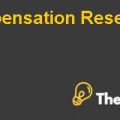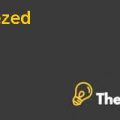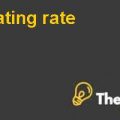Syntonix Pharmaceuticals Case Solution
Introduction
Syntax Pharmaceuticals, a Boston bio pharmaceutical startup company, was seeking additional financing for growth. An improved delivery platform had been developed and patented by the company to be used in the production of their bio pharmaceuticals and enable them to develop new therapies to treat chronic diseases.The Transactor® technology utilized a unique biological pathway to allow efficient delivery of Syn Fusion™ drug therapies. These technologies were licensed by a number of companies for addressing several different conditions such as Hemophilia B, autoimmune disorders, infertility, as well as for use in enhanced peptide inhalation.
Problem Diagnosis
The Angel money had been used by the company and the Rounds A and B of financing had been complete. Now the management was looking for additional financing of about $ 80 to $ 100 million for growth purposes. The company has been in V C negotiations for gaining the C round of funding. Bio gen Dice, which was also one of the members of the syndicate that had indicated interest in buying Syntax outright. Now a decision needs to be made by the management that whether they should proceed with this buyout or not and at what price.
Case Analysis
Technology At Syntax
Long before the development of the Syntax technology for drug delivery, there were several complex traditional methods for performing drug delivery. These methods included oral medication, trans dermal patches, injections and pulmonary delivery. However, with the development of innovative Transactor technology biosynthesis, a naturally occurring system was made through which it was possible to transport antibodies from a mother to her unborn child and utilize it for the drug delivery.
By utilizing the F c-Fusion technology as the delivery system, Syntax had developed bio pharmaceutical applications, which were called Syn Fusion drugs. The company then developed the long acting bio pharmaceuticals, which may be inhaled or injected, less and less frequently with passing time. By late 2006, the technology was built in house of Syntax and all the employees worked on R&D, in-house. The market for this technology was growing at 6.7% and it was expected to exceed $ 35 billion by 2008.
Industry and Economic Analysis
The pharmaceutical and biotechnology industry was composed of companies, which developed, researched and manufactured the pharmaceuticals. All the firms were engaged in development and discovery of new technologies to develop and discover new drugs and manufacturing processes. The economic environment of the country and the complex nature of the industry made it difficult for new startup companies like Syntax to access new capital for continued operations. It was highly critical to access new capital because of the length of time required to get a product approved and the high costs of drug development.
The barriers to entry were high as well haste threat of substitution. The competitive rivalry within the industry was intense. The small players in the market were dependent on the funds from the venture capitals, strategic alliance and the public equity markets. The new drug development process was also quite lengthy with costs in excess of $ 800 million. Lastly, the failure rate was extremely high in the market as only 21.5% chemical entities achieved final clinical success and got approval from FDA.
Financing for Syntax& Outright Buyout of Syntax
Synoptic had already used its seed financing as well as Rounds A and B of financing. The V C market was a complex market and most of the V Cs sought higher returns of around 5 to 50 times larger than their original investment. Most of the V Cs did not invest in later stages because of the high rate of failure so the chances for Syntax for Round C financing are also small. Moreover, as more rounds of financing passed the equity of the owners became diluted, this was a major drawback for Rick and Laura, the owners of the company.
Syntonix Pharmaceuticals Harvard Case Solution & Analysis
However, the company is still looking for a third round of financing with a burn rate of $ 1 million per month. The development of the next product, which is Factor IX drug, would require financing of around $ 80 to $ 100 million. A syndicate was formed for Round C financing and one of the members of the syndicate Bio gen Dice became interested in Syntax and its hemophilia co-development work. They wanted to buyout the company outright. Rick needs to make a final decision now.............
This is just a sample partial case solution. Please place the order on the website to order your own originally done case solution











